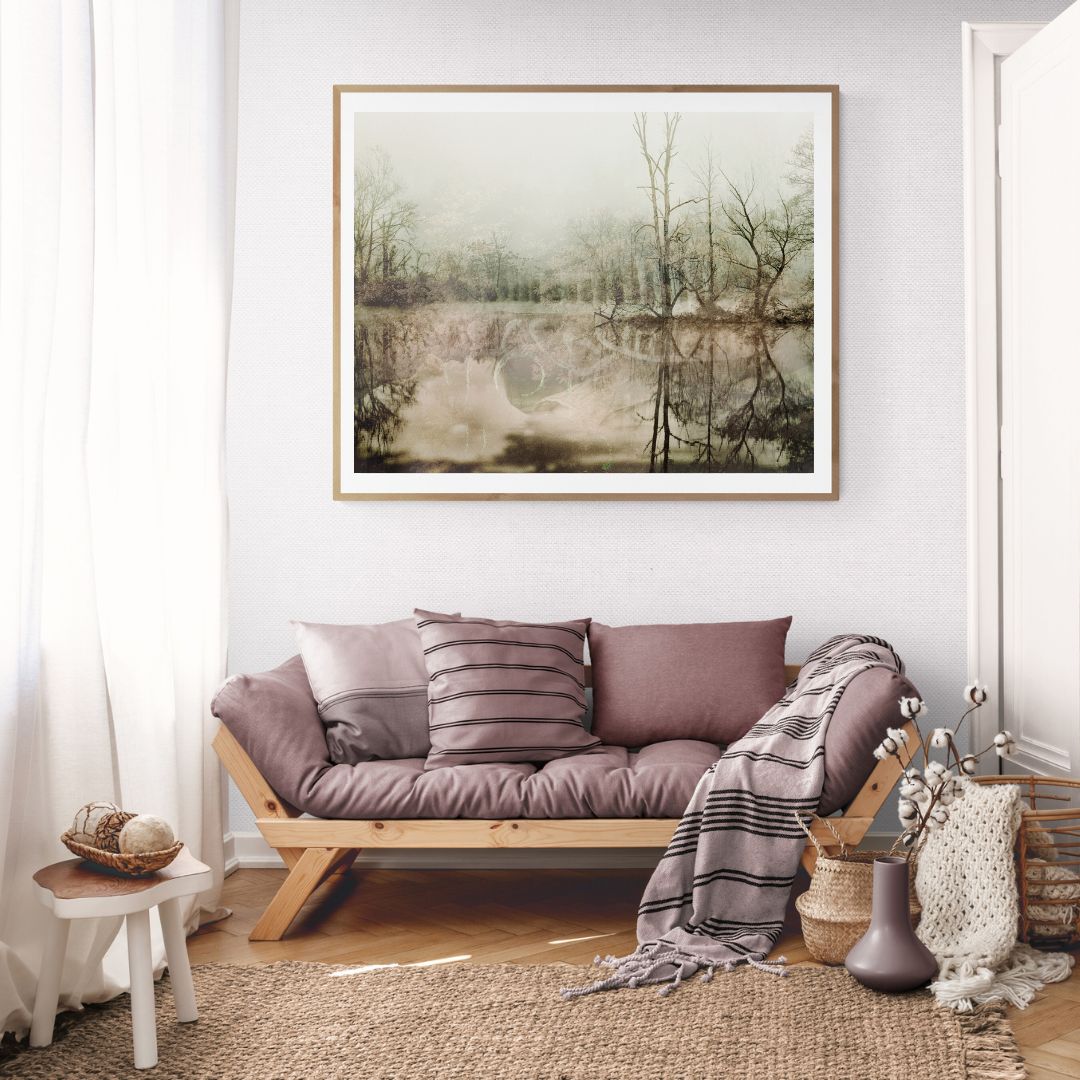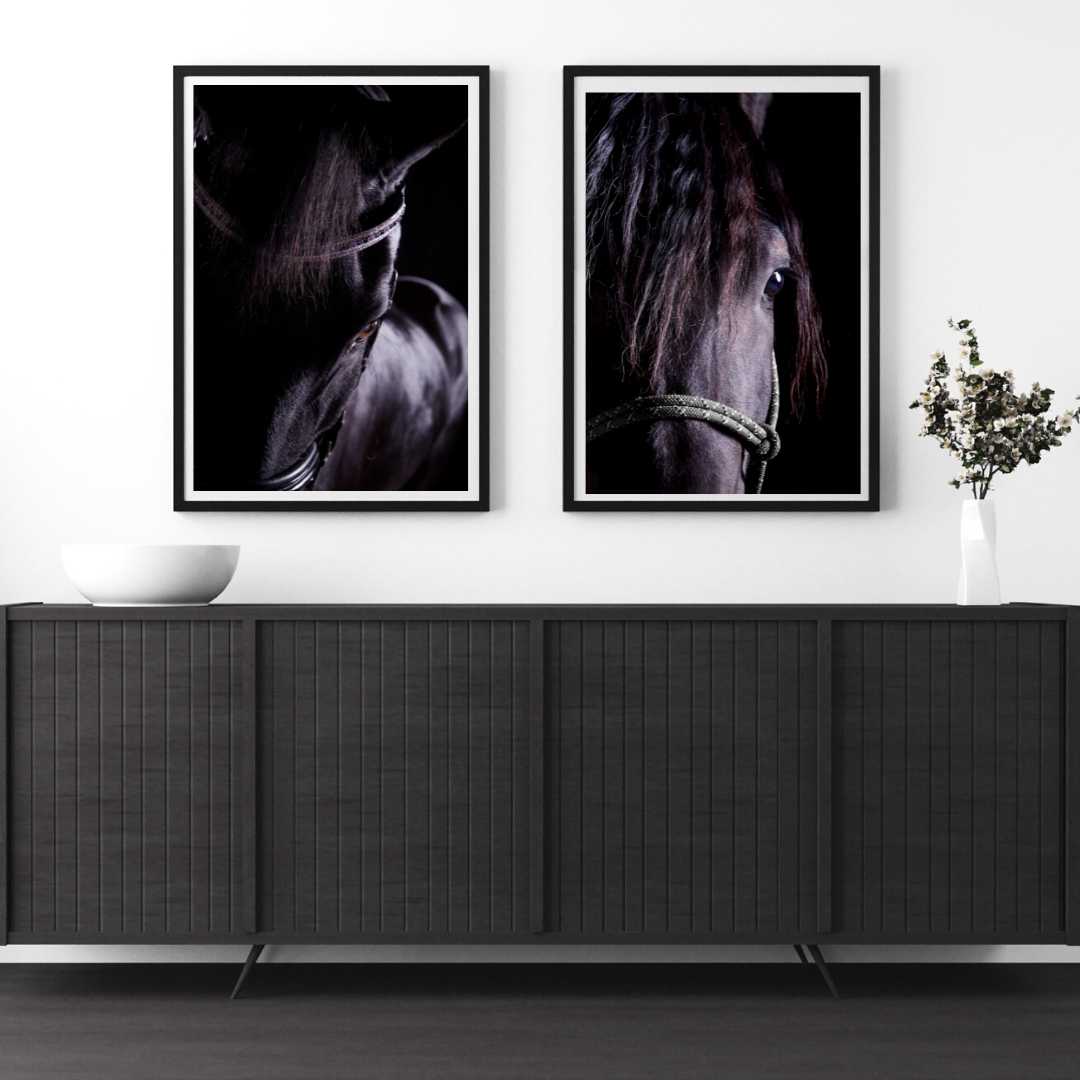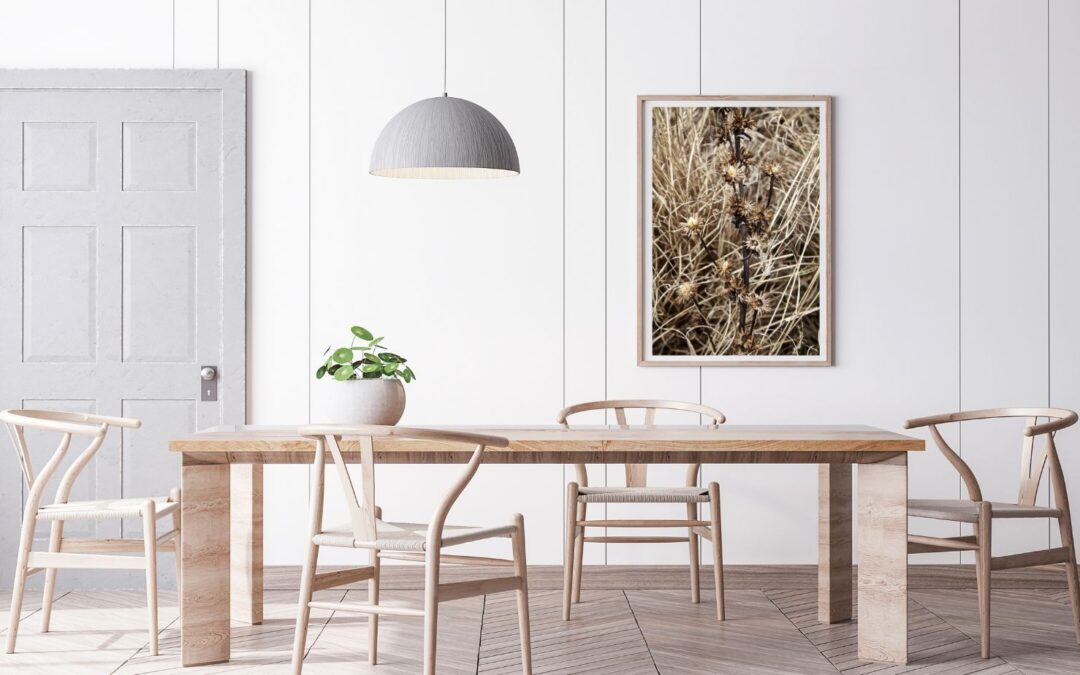You now have defined the perfect spot for your print and know which size you need for it… But read on to know how to hang a print before grabbing that hammer!
If you have a good spatial sense and are handy, you could wing it. I wouldn’t recommend it if you’re creating a gallery wall (or even need to align two prints together), but if it’s only one print and you’re feeling confident and know what your wall is made of (plaster, sheetrock, bricks..), go for it! Just remember the art should cover two-thirds to three-fourth of your available wall space or width of the furniture piece.
For anyone else, here are some tips to keep in mind on how to hang a print.
If the print is the centerpiece on a blank wall (think, in a hallway or corner of a room), aim to hang it so its center falls at eye level (between 56 and 60” from the floor). Even if you’re tall, don’t hang the art so high people can’t easily appreciate it!
If the print is going above a piece of furniture, hang it between 4 and 12” above the top of the couch, headboard, fireplace mantel, etc.. This will ensure the artwork has some breathing room. This rule also works for hanging a large print on a blank wall behind a dining room table (or other).
If the print is part of a large gallery wall, you can create a grid if all the pieces are of the same size. Or you can cluster different artworks in a more organic way. Do some research online to see which style suits you best – there’s no wrong answer here!
Once you have mapped out how big and tall your gallery wall will be, treat it as one unit:
- If it’s going on a blank wall, make sure its center is at eye level (56 to 60” off the floor).
- If it’s going above a piece of furniture, place the lowest pieces 4 to 12” above it.


How to hang a print if it is with 1 or 2 other artworks. You have 2 options:
- If all the pieces are the same size, you should line them up to create symmetry. You can go either vertically or horizontally, depending on your wall space. Keep them 3 to 4” apart.
- When the artworks are of different sizes, have fun with how you place them. Just make sure their middle points line up to bring some order to the grouping, and keep them 3 to 4” apart.
Treat the grouping as one unit, make sure its center falls at eye level and / or it’s 4 to 12” above a furniture piece.
How to hang a print if the prints are running along a staircase. Some planning is needed, like for any other gallery wall:
- Come up with an order for all the different pieces. You could start with small prints, go bigger in the middle of the staircase, and end again with small pieces. Or you could alternate 1 larger print with 2 smaller ones… Look for inspiration online and take the time to map things out.
- Draw in pencil or with painter’s tape a straight line that runs parallel to the stair. The line marks the center of the larger prints, with the smaller pieces placed next to them.
- Hang a piece every 2 to 3 steps to get a diagonal look.
(Stating the obvious here, but make sure your staircase is wide enough so your prints won’t get knocked down every time you’re rushing out the door!)

PRO TIP #2: If you have low ceilings (below 8 feet), separate your wall into 4 sections and hang your artwork in the third section (from the bottom up). Not too high, not too low, just right! (channel your inner Goldilocks!)
On a picture ledge shelf. This is currently my favorite option and I cannot wait to implement it in my place. You can switch artworks without having to worry about putting new hooks and nails on your walls. It’s a minimalist setup that gives you the versatility of a movable gallery wall. What’s not to love?
On a floating shelf or a bookshelf. Add decorative elements (books, souvenirs, plants) of varying heights around the print and have fun with it! Easy to swap things around when your space needs a refresh. But make sure the print is secured and cannot slip and crash on the floor (which happened to me not once but TWICE! Needless to say, I don’t recommend the experience).
Casually leaned against the wall. On the floor near your bed, on top of your buffet in the dining room… this option is like the cool kid we all wanted to be in school – nonchalant, not even trying, and yet perfectly put together! (just make sure the print can’t slip!)



